How Do You Proof a Presentation…?
Developing a great presentation involves a lot of communication between designer and presenter. There are lots of options for supplying a proof to a client and receiving feedback and direction on content – some proofing rounds and processes are good, some hinder.

On The Presentation Podcast, a recent episode was all about design studios sending proofs of presentations from clients, listen to it here.
Here is a quick overview of the 4 most common options for providing a proof:
- PDFs are easy to create directly from PowerPoint, are easy to email, are mobile device friendly and have a great built-in commenting function. But they are static, so transitions, animation and video are not seen.
- Video is also easy to export directly from PowerPoint and show all animations, transitions, custom fonts, etc. The downside is that the files can be large and there is not an easy way to provide feedback/comments.
- Sending an editable PowerPoint file is the easiest option. The biggest concern is version control (who is working and minor items like custom fonts, client changes not being caught [for design, file size, etc.]) and ensuring what was designed is what is being seen.
- Co-authoring and collaboration, which can be the built-in Office 2016 feature or an external program, have improved to the point of being a valid solution. But I find the most common issue is scheduling – designer and client having same time available to “meet” can be difficult.
The next few posts are going to demo some of the online proofing tools TLC Creative has been using.
-Troy @ TLC
Crop to Aspect Ratio & Shape in PowerPoint
When PowerPoint added image crop capabilities, the need to rely on Photoshop (or other external image editing programs) was amazingly reduced. The Image Crop tool has some great advanced options that are not well known, or used nearly enough. So, here is a demo of two great tools hidden in PowerPoint’s Image Crop tool.
Here is our sample slide and original image, a tall rectangle:
If the goal is to use a perfect square image, it is only 3 clicks away:
- Select the image
- Go to FORMAT > CROP > ASPECT RATIO
- Select 1:1 and the image is cropped to a perfect square (1:1 aspect ratio) – without the image being distorted
- The bonus click would be moving the image within the crop to adjust what is visible
- 3 clicks and our test slide image now looks like this:
The same can be used for the common 4×3 and 16×9 aspect ratios and several other options!
Another great, but not well known, option of the Image Crop tool is changing the shape of any image. All of the shapes dialog, used to add a PowerPoint shape (rectangle, circle, trapezoid, etc.) are available to images too.
- Select the image
- Go to FORMAT > CROP > CROP TO SHAPE
- Select any available PowerPoint shape
- 3 clicks and the image can be an oval or trapezoid:
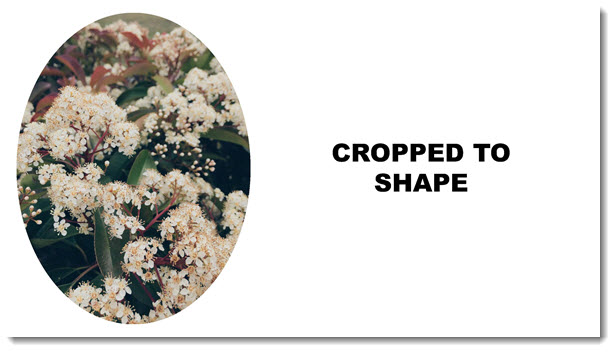
-Troy @ TLC
Applying Line and Paragraph Spacing
Quick Shortcut to Apply Line and Paragraph Spacing
The F4 key reapplies the last action. It’s a great timesaver for those repetitive actions – an especially helpful task in customizing the line and paragraph spacing in a text box where not every paragraph gets the same spacing. Here is my sample slide with several text boxes and several paragraph spacing opportunities to improve the legibility.
If the formatting goal is to add some additional paragraph space between the bullets on each text box, the process unfortunately involves selecting the bulleted text in one text box, opening the paragraph spacing dialog, adjusting, closing dialog and then repeating the process in the next text box.
As a shortcut, adjust the Line and Paragraph spacing, then select the next text box and position cursor on the next bullet line. Use F4 to repeat the step automatically! F4 applies the last action made, so in this case you can go from the above sample slide to the one below in less than 30 seconds vs. several minutes selecting text boxes and opening/adjusting the Line and Paragraph dialog 6 times.
The F4 repeat works on virtually any command while editing slides. Another great use is formatting text in Tables – in this sample F4 was used to quickly add the text indenting for each 2nd line.
Also, Ctrl Y is another key command that does the same thing. So F4 or CTRL+Y repeat the last command. Test it out and see how it can save you time.
-Troy @ TLC
Crop to Shape in PowerPoint
Images within PowerPoint can be formatted to have many different effects. In addition, a formatted image can also be cropped to any shape without affecting any existing formatting using the Crop to Shape tool.
1. Begin with an image that has been formatted within PPT.

2. Select the image, and then click the drop down arrow below the Crop button under the Picture Tools Format tab.

3. Hover over Crop to Shape to show the many different shapes available to crop the image to.
4. Select the shape you wish to crop the image to.
5. The image is now cropped to the new shape and all original formatting is still in place. Here are some examples of the image cropped to different shapes:




-Troy @ TLC
PowerPoint Guides: Master vs. Slide
In PowerPoint, guides help with formatting, positioning and slide-to-slide consistency. The PowerPoint guides have evolved over the past few versions. Here is a quick overview of the three different types of guides:
Master Slide Guides (Orange by default): Editable only on the master slide and display on all layouts and slides using that master slide.

Master Layout Guides (Yellow by default): Apply to individual master layouts only and are only editable on that particular master layout. Here an additional guide is added to the TITLE layout, so only TITLE layout slides will see this new guide.
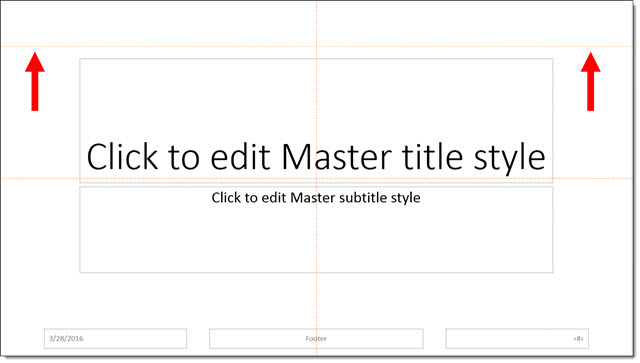
Slide Guides (Gray by default): These are guides added and editable on slides (in edit view, not master view or slide show). In this example, 2 new guides have been added to the slide.
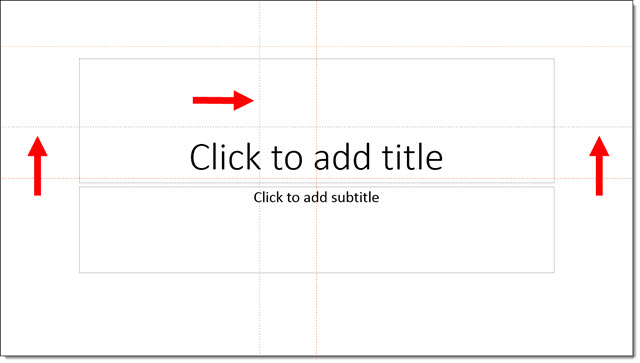
Existing guides can be adjusted by clicking and dragging them . The easiest way to remove a guide is to drag it off the slide.
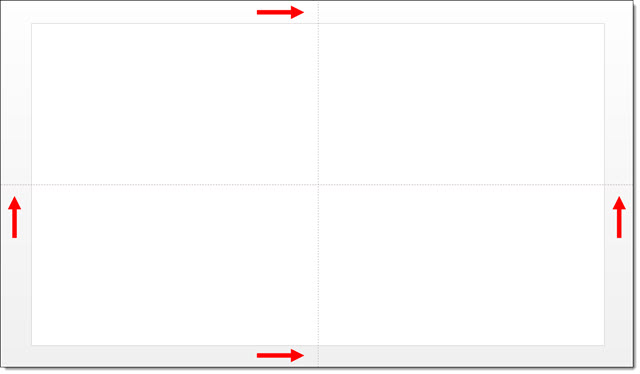
In addition, you can change the color of guides. To change the color of a guide:
- Right click the guide you want to change the color of (be sure it is in an area off the slide or on an empty area of the slide)
- Hover over Color
- Select a color option
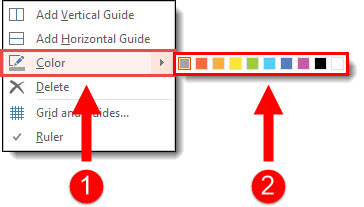
To add PowerPoint guides to a slide or layout:
- Right click off slide or on an empty area of the slide
- Go to Grid and Guides
- Choose Add Vertical or Add Horizontal
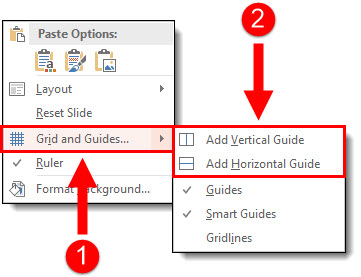
– Troy @ TLC
PowerPoint Text Box Cell Padding (Margins)
One great feature of PowerPoint is knowing that every text box is basically a mini Word document which means adjusting the cell padding can be done quickly and easily.
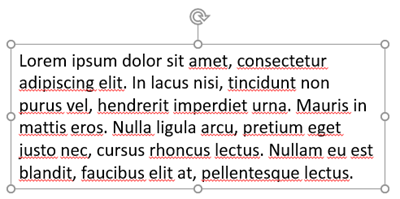
By default, all text is inset a small amount in each text box. Here is an example from the Microsoft PowerPoint 2016 default template. There is .1″ all the way around.
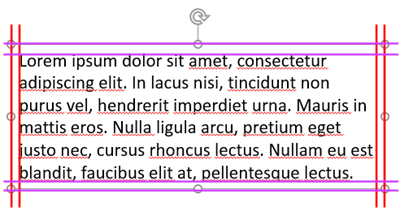
The cell padding, or inset, is easily customized. Select a text box, right-click and select Format Shape.
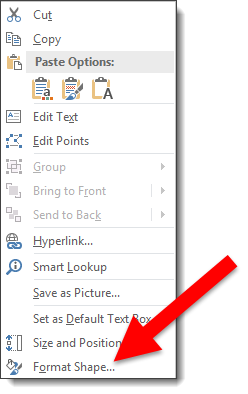
In the Formatting text pane, click the Text Options.
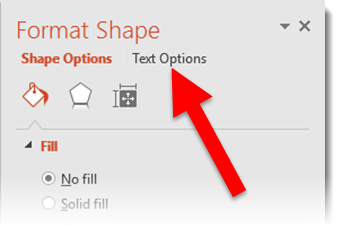
Click the text box icon.
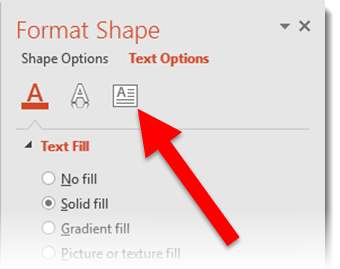
Adjust the Left/Right/Top/Bottom margins exactly as needed.
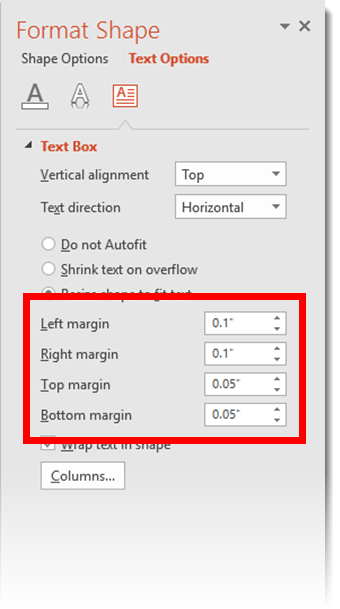
Here is the same text box with a 0″ margin all the way around so the text is right next to the placeholder now.
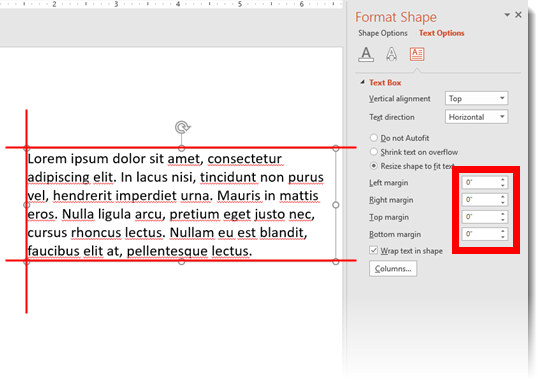
And here is a callout bar with the text set to start 1″ in from the left edge.
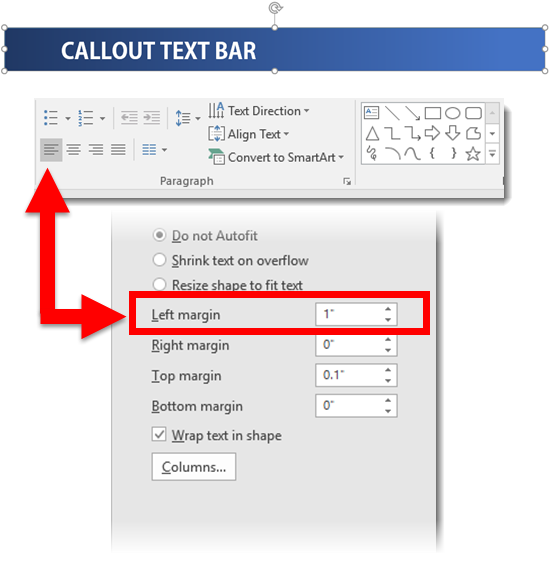
Just some formatting ideas for your next presentation. Otherwise, you are stuck wondering why the text in a shape is not in the position it should be.
– Troy@TLC
New Podcast Today!- How, and When, To Hire a Presentation Design Professional
This is the 1st Tuesday of April and Episode #3 is now live at The Presentation Podcast! Check out the show notes and subscribe on iTunes to listen in.

-Troy @ TLC
